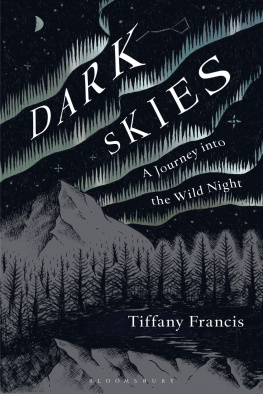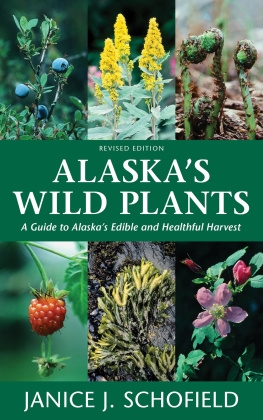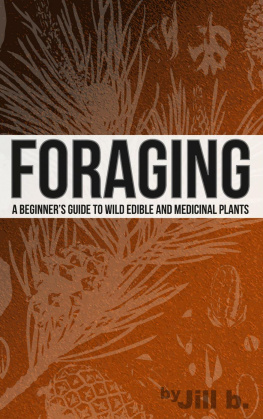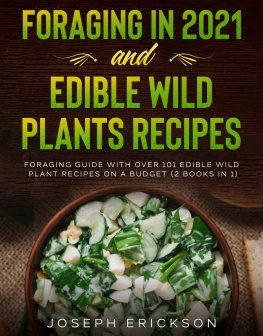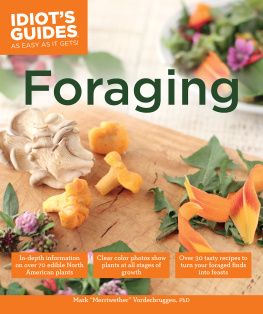
To my lovely family and to Dave
The sight of the awful and majestic in nature had indeed always the effect of solemnising my mind and causing me to forget the passing cares of life.
Mary Shelley
BLOOMSBURY WILDLIFE
Bloomsbury Publishing Plc 50 Bedford Square, London, WC1B 3DP, UK
This electronic edition published in 2018 by Bloomsbury Publishing Plc
BLOOMSBURY, BLOOMSBURY WILDLIFE and the Diana logo are trademarks of Bloomsbury Publishing Plc
First published in Great Britain 2018
Copyright Tiffany Francis, 2018
Photographs and Illustrations Tiffany Francis 2018, with the exception of those listed
Tiffany Francis has asserted her right under the Copyright, Designs and Patents Act, 1988, to be identified as Author of this work
For legal purposes the Photograph Credits constitute an extension of this copyright page
All rights reserved
You may not copy, distribute, transmit, reproduce or otherwise make available this publication (or any part of it) in any form, or by any means (including without limitation electronic, digital, optical, mechanical, photocopying, printing, recording or otherwise), without the prior written permission of the publisher. Any person who does any unauthorised act in relation to this publication may be liable to criminal prosecution and civil claims for damages.
A catalogue record for this book is available from the British Library
ISBN: 978-1-4729-4120-6 (PB)
ISBN: 978-1-4729-4119-0 (eBook)
ISBN: 978-1-4729-4118-3 (ePDF)
Design by Gridlock Design
To find out more about our authors and their books please visit www.bloomsbury.com where you will find extracts, author interviews and details of forthcoming events, and to be the first to hear about latest releases and special offers, sign up for our newsletter.
To ensure your own safety and to protect the environment, please refer to for information on the ethics and safety of foraging.
CONTENTS
AN INTRODUCTION TO FORAGING


When I was writing this book, I was asked countless times by friends and family to explain exactly what foraging was. Most knew it involved gathering fruit from the hedgerows and seeking out the first wild garlic leaves of spring, but I was also asked if Id be scrumping pears from private orchards (no comment) or scooping up roadkill for a hot pot (no ethical objection here except my vegetarianism). I think, foraging is one of the most fascinating and enjoyable hobbies there is and one anybody can get stuck into from the tiddliest child to that bizarre friend of yours who cant tolerate dirt. For me, foraging means learning about the wild plants in your local environment, gathering the edible ones and eating them in the most satisfying way possible. Its about collecting edible treasures from our native trees and simmering them into dark, sticky jams, and about biting on the earthy crunch of hazelnuts fresh from the husk, tasting the salt crystals hidden in a frond of seaweed, and gathering silver mushrooms under a sky scattered with stars.
The art of foraging is almost as ancient as humanity itself. One of the first adaptations early humans made was the transition to hunting and gathering. We taught ourselves to hunt wild animals and gather plants to feed our families, habits that became so essential to our survival that it lasted for 90 per cent of human history, before farming was introduced at the end of the Stone Age. In a world before online shopping and takeaway pizza, foraging was a vital part of daily life for our ancestors and one on which they depended to stay alive. Now we have such secure, affordable and varied food production, why should we bother to forage for our food? Why seek out blackberries, hazelnuts or thyme when we can find them all in the vegetable aisle?
By examining how far we have strayed from our primordial roots, it becomes more and more apparent why we must reconnect with nature and our wild origins. In Stephen Moss 2012 Natural Childhood report for the National Trust, it was revealed that on average, British children watch more than 17 hours of television a week and spend more than 20 hours a week online. While there are positive benefits of screen time, the belief is that children are not being given the freedom to escape outdoors and enjoy the natural world. Access to nature has also proven to have positive effects on the mental and physical health of adults. It is essential that we switch up our weekly schedules and spend more time in the beautiful landscapes our country has to offer foraging is the perfect way to do it.
We are also living in a world where more and more people are keen to know where their food has come from. Cheap products with dodgy labels are all very well, but many of us now rightly insist on understanding the provenance of our food, particularly regarding animal welfare, environmental costs and unethical ingredients.
When carried out sustainably and respectfully, foraging is an incredibly environmentally friendly choice, as there is no reliance on chemicals and pesticides, the food is seasonal, and there is no carbon footprint from importing and transportation. It can literally be harvested fresh from the ground and carried lovingly to your own kitchen, ready to be savoured and devoured. When I scoop a thick blob of blackberry jam onto a piece of warm toast, my mind fills with recollections of misty autumn walks and the kitchen cupboard is transformed into a scrapbook of delicious memories.
THE ETHICS AND SAFETY OF FORAGING
A good forager is an ethical one. Pick only the amounts you need to ensure plant populations remain healthy and leave plenty for the birds and wildlife with whom we share our wild food. Remember to keep to public places and steer clear of private land, as it is illegal to trespass or forage there without permission. You dont need any snazzy equipment to forage, but I tend to bring a Thermos of tea, Tupperware tubs, scissors, gardening gloves and a raincoat.
Think carefully about the places you want to forage. The countryside is full of delicious wild food, but avoid searching along the edges of large agricultural fields which have often been treated with chemicals. Similarly, watch out for popular dog walking routes where our canine companions may have kindly marked their territory. As a general rule, if a patch of plants looks particularly shrivelled or unhealthy, its best to leave it alone.
My favourite thing about foraging is the thrill of a new species, but remember the golden rule: If youre not 100 per cent sure, dont pick it. There are plenty of extra resources online that can help you feel more confident with identification, and social media is a fantastic place to ask others for help. This rule is particularly important for mushroom picking, for obvious reasons; as with all wild fungi, eat only a small, cooked amount of new species if you havent tried them before. There are surprisingly few deadly species of fungi in Britain, but plenty can give you a dodgy belly. Pregnant women should also be careful of certain species like bog myrtle and chamomile; its always best to take extra care and consult your doctor if youre unsure.


